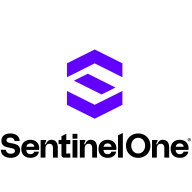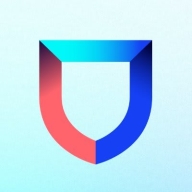


Cisco Secure Workload and Lacework FortiCNAPP both enhance cloud security. Cisco Secure Workload has an edge due to its integration with Cisco ecosystems, whereas Lacework FortiCNAPP excels with modern cloud-native features.
Features: Cisco Secure Workload offers network-centric capabilities, ensuring deep visibility and protection across multi-cloud infrastructures. It stands out for its extensive integration with Cisco's security tools. Additional strengths include telemetry coverage, policy streamlining, and micro-segmentation support. Lacework FortiCNAPP shines with behavioral analytics, machine learning-powered anomaly detection, and comprehensive compliance reporting. It provides valuable insights through real-time alerts and supports continuous monitoring of configurations.
Room for Improvement: Cisco Secure Workload could improve by enhancing its user interface and expanding support beyond Cisco networks. It might benefit from adding more advanced threat detection technologies like AI. Lacework FortiCNAPP can improve by strengthening its support systems and refining integrations for ease of use. More comprehensive documentation and seamless onboarding experiences for new users would enhance the product significantly. Another area for improvement is reducing false positives in alert systems to streamline user focus.
Ease of Deployment and Customer Service: Cisco Secure Workload is noted for its streamlined deployment in Cisco environments, coupled with robust support channels. This makes integration smooth for existing customers. On the other hand, Lacework FortiCNAPP is lauded for its user-friendly deployment, which accommodates dynamic cloud environments. However, its customer support, although helpful, is less established compared to Cisco’s extensive network.
Pricing and ROI: Cisco Secure Workload demands a higher initial setup cost, but offers substantial ROI with its seamless integration and enhanced network security within the Cisco ecosystem. Pricing specifics aren't disclosed. Lacework FortiCNAPP positions itself as a cost-effective alternative with competitive pricing, offering significant ROI for those leveraging advanced machine learning analytics. While it doesn't match Cisco's integration benefits, it provides excellent value for cloud-native application security.
| Product | Market Share (%) |
|---|---|
| SentinelOne Singularity Cloud Security | 3.6% |
| Cisco Secure Workload | 2.6% |
| Lacework FortiCNAPP | 2.4% |
| Other | 91.4% |



| Company Size | Count |
|---|---|
| Small Business | 47 |
| Midsize Enterprise | 20 |
| Large Enterprise | 52 |
| Company Size | Count |
|---|---|
| Small Business | 5 |
| Midsize Enterprise | 3 |
| Large Enterprise | 8 |
| Company Size | Count |
|---|---|
| Small Business | 4 |
| Midsize Enterprise | 4 |
| Large Enterprise | 4 |
SentinelOne Singularity Cloud Security offers a streamlined approach to cloud security with intuitive operation and strong integration capabilities for heightened threat detection and remediation efficiency.
Singularity Cloud Security stands out for its real-time detection and response, effectively minimizing detection and remediation timelines. Its automated remediation integrates smoothly with third-party tools enhancing operational efficiency. The comprehensive console ensures visibility and support for forensic investigations. Seamless platform integration and robust support for innovation are notable advantages. Areas for development include improved search functionality, affordability, better firewall capabilities for remote users, stable agents, comprehensive reporting, and efficient third-party integrations. Clarity in the interface, responsive support, and real-time alerting need enhancement, with a call for more automation and customization. Better scalability and cost-effective integration without compromising capabilities are desired.
What are SentinelOne Singularity Cloud Security's standout features?SentinelOne Singularity Cloud Security is deployed in industries needing robust cloud security posture management, endpoint protection, and threat hunting. Utilized frequently across AWS and Azure, it assists in monitoring, threat detection, and maintaining compliance in diverse environments while providing real-time alerts and recommendations for proactive threat management.
Cisco Secure Workload is a cloud and data security solution that offers a zero-trust policy of keeping an organization’s application workloads safe and secure throughout the entire on-premise and cloud data center ecosystems.
Cisco Secure Workload will consistently provide protection by discovering workload process anomalies, stopping threats immediately, minimizing the risk threat surface, and aborting any lateral movement.
Today’s ecosystems are very elastic, and in the application-focused dynamic of today’s aggressive marketplace, Cisco Secure Workload delivers a robust security solution that works effectively with today’s most popular applications. The solution uniquely surrounds each and every workload to ensure organizations are able to keep their data, network, and applications safe and secure at all times. Cisco Secure Workload ensures that enterprise organizations can maintain secure applications by consistently building firewalls around every workload level throughout the entire ecosystem. The solution can manage applications that are deployed on containers, virtual machines, or bare-metal servers.
Cisco Secure workload is able to meet an organization's busy needs and offers flexible options such as Software-as-a-Service (SaaS) and on-premises options. Using the Secure Workload SaaS options, users receive all the benefits of Cisco Secure Workload protection without the hassle of having to deploy and maintain the platform on premises. Users are responsible for acquiring the necessary software licensing and deploying software agents. Using SaaS, Secure Workload runs in the cloud and is operated and maintained by Cisco. This option offers the ability to scale easily and is a popular choice for SaaS-first and SaaS-only clients. Many organizations find they get the best TCO and achieve the best productivity and profitability using the SaaS options.
When choosing on-premises options, organizations choose between hardware-based appliance models (large or small form factors). Platform selection is dependent on scalability goals, the desired fidelity level of flow telemetry, and the actual number of workloads. When a user chooses to configure Cisco Secure Workload for a conversation-only flow telemetry for all workloads, each platform has the capability to scale up vertically twice the default platform scale. Additionally, with Secure Workload, it is possible for the platform to be scaled horizontally in order to satisfy the demands of extra large widely distributed enterprise environments using federation capabilities.
Cisco Secure Workload also provides a robust disaster recovery (DR) tool, which helps to make it a complete, comprehensive solution. The DR allows for continuous restore and backup capabilities that enable users to quickly remediate operations and data to a standby cluster in the event of a drastic failure or disaster.
Reviews from Real Users
“The solution offers 100% telemetry coverage. The telemetry you collect is not sampled, it's not intermittent. It's complete. You see everything in it, including full visibility of all activities on your endpoints and in your network. Other valuable features include vast support for annotations, flexible user applications, machine learning, automatic classification, and hierarchical policies.” - CTO at a tech vendor
Lacework FortiCNAPP provides robust cloud security, combining vulnerability management and multi-cloud insight with user-friendly controls, machine learning detection, and compliance support.
Lacework FortiCNAPP specializes in cloud security by merging machine learning anomaly detection with agent-based vulnerability management to offer detailed alerts and compliance reports. Its comprehensive approach allows continuous monitoring across AWS and Kubernetes, providing insights from an attacker's perspective. The platform offers automation and seamless Slack integration, facilitating collaborative and efficient cloud security management. Users value its ability to handle multi-cloud environments and scan IAC scripts, configurations, and compute nodes across AWS and GCP.
What are the key features?Organizations across sectors leverage Lacework FortiCNAPP for cloud security, focusing on compliance, security posture, and vulnerability management. It is widely used for monitoring AWS and Kubernetes environments, scanning IAC scripts, configurations, and securing compute nodes. It supports multi-cloud security posture management and log ingestion, enabling companies to maintain strong cloud infrastructures without dedicated security layers.
We monitor all Cloud Workload Protection Platforms (CWPP) reviews to prevent fraudulent reviews and keep review quality high. We do not post reviews by company employees or direct competitors. We validate each review for authenticity via cross-reference with LinkedIn, and personal follow-up with the reviewer when necessary.